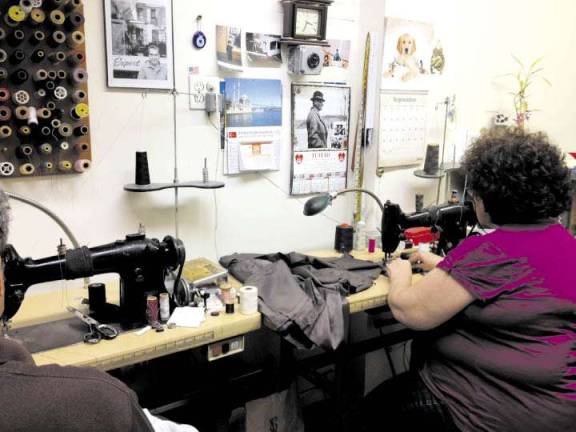A New Generation of Tailors

Formerly the territory of mostly European immigrants, more Upper East Side tailor shops are run by other families
"He's the master tailor," Nurten said, pointing to her husband.
As a generation of tailors who came from Europe has passed away or retired, Asian tailors have replaced them. The trend is particularly noticeable on the Upper East Side.
Across 93rd Street, at Elizabeth 93 Cleaners, owner Zhijie Fan answered calls on a cordless phone while a Katy Perry song played on the radio, and a buzzer sounded each time the front door opens. The storefront advertises a specialty in altering wedding gowns and tablecloths.
"Why do I work in cleaners? Tailors? The same reason you work: to pay the rent," said Fan, 41.
Onay Tailors has gone through four different East Side locations in 40 years, first at 87th Street in 1973 ? "That was between 2nd and 3rd Avenues. We started in the basement and moved up," said Onay ? then at 81st Street 10 years later. Another decade later, the couple moved to 83rd Street, and 10 years later to the current location, tucked between a sushi restaurant and an apartment building.
Inside George's European Tailor Shop at 1168 Lexington Avenue, pride in the European history of dressmakers and tailors is ever-present. A small Greek flag waves in the front window of the narrow store space between East 80th and 81st Streets.
"There are one thousand tailors in this city, but only four or five of them are real tailors," owner George Marakomiheakis said, "and the real tailors are from Greece, Israel, Russia, Italy, and Constantinople."
Marakomiheakis, 67, settled in Astoria, Queens when he migrated to the United States from Greece. He was 20 years old when he arrived in Astoria for "a better future." Marakomiheakis' parents, farmers in his home of Crete, stayed behind. He attended night classes to learn English and worked in a suit factory for two years before opening his first business on 87th Street. Since then, he has moved to Park Avenue at 70th Street, and once more to his current storefront on Lexington Avenue.
Onay believes the trend of Asian tailors dominating the business reflects the interest in education of first-generation European families.
"When you come here, you have to do something with no education," she said. "You have to make something, even if it's the smallest business. You have two kids, and they're not going to be tailors. They're going to be professionals. That's how it was with us."
A faded red and white sticker with the words "I'm a proud St. John's University parent" hangs by a counter in George's European Tailor Shop. One of Marakomiheakis' two daughters attended the university in Queens and now works as a teacher. His other daughter works as a cosmetologist. Marakomiheakis says that he has not seen any new young European tailors in years. He acknowledges the more recent tailors are predominantly Asian, like the tailor adjacent to his store across Lexington at Carlton Cleaners.
"Becoming technicians and tailors doesn't interest young people of European families anymore," said Marakomiheakis, "they want money, and they aren't patient."
In a May 2012 report, the Federal Bureau of Labor Statistics said tailors, dressmakers and custom sewers earn a mean annual wage of $29,170. Although this is about $18,000 above the national poverty line, Onay stressed her outlook on the future of European tailors.
"There isn't one," she said, needle in hand.
This story originally appeared in Baruch College's Dollars & Sense magazine and Origins blog. Reprinted with permission.